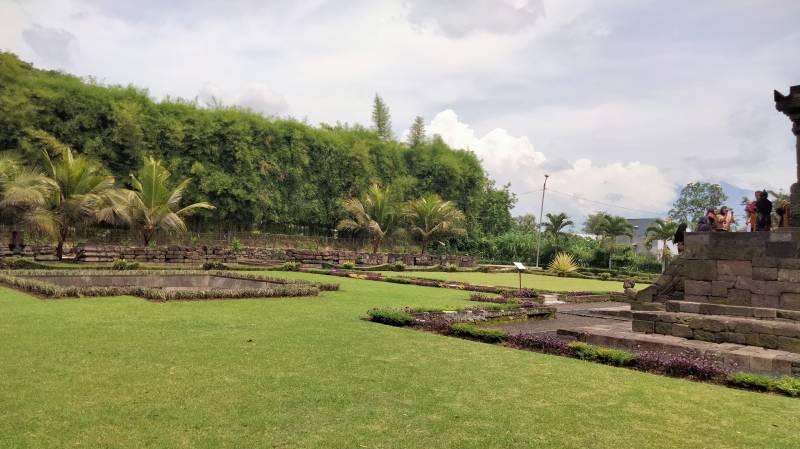Address : Jl. Raya Candi V No. 5D, Doro, Karangwidoro, Kec. Dau, City of Malang, East Java 65146
Peta : Click here
In 1923 the world of Indonesian archeology was again shocked by the discovery of a temple in the Karang Besuki area, Dau, Malang Regency, East Java. Located about 5 km from the center of Malang City, this temple is said to be the oldest temple in East Java, because according to some sources, the Clown Temple is around 1400 years old.
Overview of the Clown Temple

Archaeologists assume that the Clown Temple, which is now a tourist attraction in Malang, was built during the reign of King Gajayana who ruled the Kanjuruhan Kingdom. Based on the information obtained from the Dinoyo Inscription (682 Caka or 760 AD) it is explained that the Kanjuruhan Kingdom was centered in the Dinoyo area.
Currently, the Dinoyo inscription is neatly stored in the Jakarta National Museum. In this inscription there is various information about the Kanjuruhan Kingdom of Malang, East Java. Among the information that tells about the reign of King Dewasimba and the crown prince Sang Liswa.
The reign of King Dewasimba was touted as the golden age of the Kanjuruhan Kingdom. These two kings were famous for their justice when they ruled, so that they became kings who were loved by their people. According to the story that developed, Sang Liswa, who later received the title of King Gajayana, was a king who liked to joke or make jokes, this was in accordance with the meaning of his childhood name Lisma which means comedy, in Javanese, Comedy is called a clown.
The Origin of the Temple

This is the origin of why the temple in the Karang Besuki area is called the Clown Temple according to one version. However, until now there has not been found a strong relationship that can describe the bond between King Gajayana and the Clown Temple.
As one of the Historical Tourist Destinations in Malang, the Clown Temple has its own uniqueness that distinguishes it from other temples. This uniqueness can be seen from the Kalamakara Carvings that adorn the doorway of the temple.
See also about the 20 Most Beautiful & Most Hits Waterfalls in Malang.
Usually when visiting temples in East Java you will be presented with a relief of a giant head complete with lower jaw, but the Kalamakara that adorns the Clown Temple is not like that. This giant head relief is made without a lower jaw, the shape of the kalamakara relief is almost similar to the reliefs that are found in many temples in Central Java.
Apart from that, the body of the Clown Temple, which is stocky and chubby, is also similar to the temples in Central Java. One that is almost similar to the Clown Temple is the Dieng Temple in terms of its symmetrical shape and relief.
You are allowed to enter the Clown Temple via the stairs on the west side of the temple. On the outside of the wall flanking the stairs, there are carvings that are no longer intact, but you can still see carvings in the form of tendrils surrounding the figure of a flute player.
While the entrance to Garba Graha (inside the temple) is equipped with a viewing room or room about 1.5 meters away, inside the body of the Clown Temple you will find phallus and yoni which are symbols of fertility believed by the people at that time. In all parts of the body of the temple, you can see niches decorated with flowers and birds with human heads, and in the northern part of the Clown Temple, a statue of Durga Mahisasuramardini was found which looks damaged.
See also about 10 Typical Malang Culinary That You Don’t Miss To Miss.
After it was discovered in 1923, archeolongers tried to restore this temple around 1925-1926, but because many parts of the temple were damaged and could not be returned to their original form, the Clown Temple that we see today is no longer intact as it used to be. Therefore, so that this temple can still be enjoyed and studied by our descendants in the future, keep it clean and don’t be nosy by destroying or taking things in the temple area, and what happens most often and you have to watch out for, when you want to capture moments in the temple Clowns, be careful, don’t step on the temple buildings carelessly.
As one of the tourist objects in Malang with a background in the history of the past kingdoms, the Clown Temple allows every visitor to access this location free of charge, but if you wish, set aside some of your money to help maintain this historical evidence of ours.
0 Post a Comment
Post a Comment